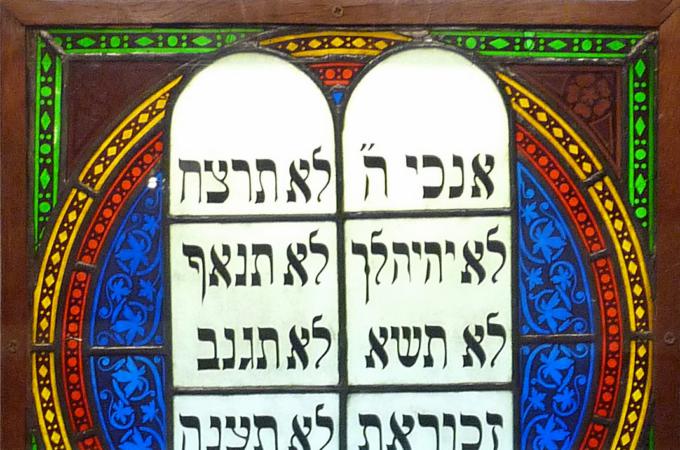The 'Catholic' Ten Commandments
Q. Recently I read an article stating that the "Catholic" Ten Commandments are different from those given to Moses. According to this article, Catholics deleted the Second Commandment -- about no idols or graven images -- and then split the last one into two in order to make up for that deletion.
(It went on to say that the original Second Commandment was eliminated because of the statues in Catholic churches and the fact that Catholics offer prayers to Mary and to the other saints.) Can you elaborate on the difference and why? (Macomb Township, Michigan)
A. The precise division and numbering of the Ten Commandments has, as the Catechism of the Catholic Church explains, varied over the course of history (No. 2066). Catholics traditionally use the formulation proposed by St. Augustine in the fifth century.
The full text of the Ten Commandments as revealed to Moses comes from two scriptural sources -- Exodus 20:2-17 and Deuteronomy 5:6-21. For both Protestants and Catholics, the currently accepted catechetical formulations represent an abbreviation of those biblical texts.
Exodus 20:2-6, for example, says: "I am the Lord your God, who brought you out of the land of Egypt, out of the house of slavery. You shall not have other gods beside me. You shall not make for yourself an idol or a likeness of anything in the heavens above or on the earth below or in the waters beneath the earth; you shall not bow down before them or serve them.
"For I, the Lord, your God, am a jealous God, inflicting punishment for their ancestors' wickedness on the children of those who hate me, down to the third and fourth generation; but showing love down to the thousandth generation of those who love me and keep my commandments."
All that is summarized by Catholics in the words: "I am the Lord your God; you shall not have strange gods before me."
In prohibiting graven images, Catholics believe that the Lord was referring to such incidents as the golden calf (Ex 32), which some Jews of the Old Testament actually worshipped as divine. Catholics do not believe that God thereby prohibited all religious images -- especially since Moses himself directed that replicas of cherubim angels should adorn the Ark of the Covenant (Ex 25).
Some Protestant worship sites, in fact, mirror Catholic churches in displaying images of the saints in stained glass, and no one actually worships those images or imagines them to be divine; they simply remind us of the holy lives of our heroes in the faith and offer them for imitation. When Catholics pray to the saints, we are not worshipping them but only asking for their help.
Q. A marriage took place in a Catholic church. The groom had not been baptized, and the couple later divorced. Now this same woman is planning to marry a different man and wants the marriage to be celebrated in the Catholic Church.
What procedure must she follow to see that this can happen? (I understand that the first marriage would not be considered a sacrament, since the first groom was not baptized.) (St. Cloud, Minnesota)
A. Catholics can receive permission from their diocesan bishop (called, technically, a dispensation from disparity of cult) to marry someone who has never received Christian baptism -- which is evidently what the woman in question did for her first marriage. It is true, as you say, that this marriage was not a sacramental one; as the Catechism of the Catholic Church states, baptism is "the door that gives access to the other sacraments" (No. 1213).
And if the non-baptized spouse could not receive a sacrament in that wedding ceremony, neither could the baptized one. You can't have a "half-sacrament."
Nevertheless -- in response to your question -- that first marriage was still a valid marriage in the Catholic Church's eyes, a holy covenant.
So, if the woman now wants to marry a different man in a Catholic ceremony, she would first need to obtain a church annulment for her earlier marriage. She should speak with her parish priest or contact her diocese to inquire about beginning that process.
- - -
Questions may be sent to Father Kenneth Doyle at askfatherdoyle@gmail.com and 30 Columbia Circle Dr., Albany, New York 12203.
- Father Kenneth Doyle is a columnist for Catholic News Service



















